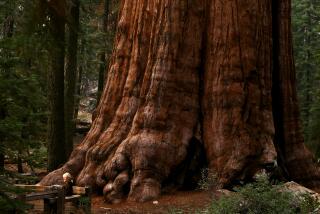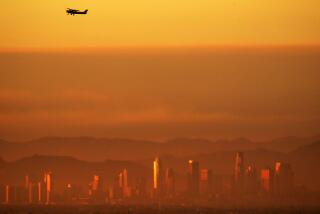California park officials, air board seek OK for deal to cut dune dust

California recreation and air-quality officials have asked a court to sign off on a deal seeking to reduce the amount of dust that emanates from a stretch of sand dunes and blows into housing tracts atop a nearby mesa in San Luis Obispo County.
The agreement comes after months of sometimes acerbic negotiations, and has economic and environmental implications that stretch throughout the Central Coast.
At stake is the future of the Oceano Dunes State Vehicular Recreation Area which bills itself as the only state park where vehicles can be driven on the beach. The park draws nearly 2 million people each year and, according to a state economic impact study, injects $171 million into the local economy — and contributes, many contend, to a cloud of dust that clogs air filters and leaves residents’ eyes stinging.
“I think this is a good way forward,” said San Luis Obispo County Supervisor Adam Hill, also a member of the air-pollution authority that signed off on the agreement. “It’s really about getting all of these communities to do what they need to do, which is deal with the dust.”
The San Luis Obispo County Air Pollution Control District and the state Department of Parks and Recreation, which had been at odds over dust regulation, joined forces and submitted the agreement last week to the state Court of Appeal.
“The case and controversy herein has been completely resolved,” the agencies wrote.
That might be true, but it also might be wishful thinking.
At issue is a cherished geological quirk of the California coast — the Guadalupe-Nipomo Dunes complex, which coats 18 miles of coastline in sometimes towering hills of fine sand.
Off-road vehicle enthusiasts have been driving on the dunes since before the Model T was released, and remain fiercely protective of their avocation. But air-quality authorities say that intensive vehicular use has compounded a pollution problem in nearby, downwind communities that are home to about 20,000 people.
A judge agreed, determining that off-road vehicles are a “major contributor to the problem.”
In 2011, the Air Pollution Control District approved a measure known as the “dust rule,” which required the park to meet air-quality standards by 2015 or face $1,000-per-day fines. That rule, and the broader attempts to measure and regulate the dust blowing inland from the dunes, has been bogged down in court ever since.
The debate has become a flashpoint in local politics: Grover Beach Mayor Debbie Peterson was booted from the air-quality board by her own City Council when she proposed repealing the dust rule. Peterson, among others, had criticized the dust rule as government overreach.
The agreement submitted to the court last week seeks to resolve that philosophical and legal debate.
The agreement dispenses with the traditional permitting process and devises a new method of regulation, establishing a dispute resolution process and a yet-to-be-named independent scientist who would act as a mediator of sorts.
That change satisfied critics such as Peterson.
“I think there should be checks and balances. That’s how we set things up in our government. That has happened,” she said.
However, the bulk of the dust rule remains in effect, including the air-quality board’s ability to assess stiff fines if air quality does not improve.
The deal does not automatically do away with a parallel legal challenge to the dust rule, filed by Friends of Oceano Dunes, a group of off-road vehicle enthusiasts. Once the agencies signed off on the deal, the air-quality agency asked the Friends organization to withdraw its lawsuit. The organization declined, said Larry Allen, executive director of the Air Pollution Control District.
So the documents filed last week ask the appellate court to determine that the organization no longer has legal standing to challenge the dust rule’s implementation.
In an email, the group’s president, Jim Suty, declined to comment, saying that the organization was “still evaluating all the inputs.”
The agreement also does not resolve a lawsuit filed recently by area residents concerned about air quality. That lawsuit seeks to force local officials to take more steps toward remediating the dust from the dunes.
Authorities at the dunes recently began installing a series of dust-control measures, including wind fences and hay bales.
More to Read
Start your day right
Sign up for Essential California for news, features and recommendations from the L.A. Times and beyond in your inbox six days a week.
You may occasionally receive promotional content from the Los Angeles Times.







